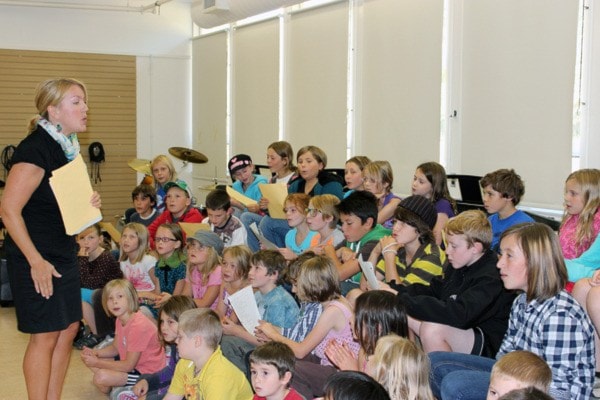The Comox Valley is home to two new — and very different — schooling programs this year.
Both programs are based on the 21st century learning theory, and feature three days per week of in-class project-based learning, and two days of distributed learning, (previously called distance learning), through Navigate powered by NIDES' (North Island Distance Education School).
Navigate and School District 71 distributed learning district principal Jeff Stewart says the way kids learn in the programs is what makes them apart.
"It's really active learning versus passive learning. And we all know from neuroscience and recent research how much more powerful those kinds of learning are over traditional sort of sit and get, digest, reproduce type of things," says Stewart, adding project-based learning, personalized learning and problem-based learning are really emphasized in the programs. "So it's really trying to take the traditional box and break it down and blow it apart.
"There's nothing, I don't think, in the province like this. It's not been tried."
Each program uses students' natural interests to help them learn the entire B.C. curriculum; the Fine Arts Academy program, offered to kindergarten to Grade 9 students, uses fine arts, and the Grade 6 to 9 ENTER program (eCademy of New Technology, Engineering and Robotics) uses science and technology.
The Fine Arts Academy is taught out of Navigate (formerly Tsolum Elementary School) and has 122 students made up of two primary, two intermediate and one upper intermediate classes. The ENTER program is offered at Aspen Park Elementary school and has 22 students.
Stewart says that while students do learn content, teachers are "less focused on checking off the boxes," and looking more at the ways the child is growing cognitively.
"Their ability to be risk-takers, their innovation, their flexibility, their adaptability as learners, the things that actually really matter in an adult world," he says. "The content will come out of them and it's very self-paced and self designed."
Another big difference is that each student and their parents meet the teachers for an interview, which are about an hour long, before the school year even starts so everybody already knows each other.
Teachers "can't believe how valuable that has actually been, because they actually know the child, the child knows them, there's a relationship before learning begins, and so when we get to the compass weeks, that dialogue between parent and teacher and student is already well entrenched," adds Stewart.
Also, the programs run on six-week learning cycles, which Stewart points out has been used in Great Britain for many years. Students do some planning and research, identify their topic, find resources, think about how they want to tackle their problem or question and decide how they want to present what they learned. Stewart notes giving students this independence in their learning helps them to "own" what they've learned.
In between each six-week cycle is a compass week where teachers meet with parents, and the student, teachers and parents reflect on how the student's learning is going. Stewart notes stepping back from the learning gives a chance to see where any adjustments or redirections are necessary.
Students also do community integration during these weeks; Stewart noted they may go out and spend some time at a dance studio for example.
Stewart points out the programs are based on intensive teacher collaboration with teachers meeting each week to discuss how things are going, and all the teachers teach the all the children — rather than having one class of Grade 3 and 4 students for the year for example.
Some classes have similarly aged students working together, while others have multi-aged students, so sometimes Grade 9s work with kindergarten students.
Both programs were popular when registration opened in February, according to Stewart; the Fine Arts Academy pretty much filled up three weeks after registration opened.
Stewart notes the Fine Arts Academy will likely increase to 144 students next year and the ENTER program will likely double to two cohorts of students.
Stewart says the programs are in their early days, and are monitored closely to see how they go.
"There's nothing predictable about where this has gone and that's the beauty of it," he says. "It's a very unique design by intent."
For more information, visit www.navigatenides.com.
writer@comoxvalleyrecord.com
